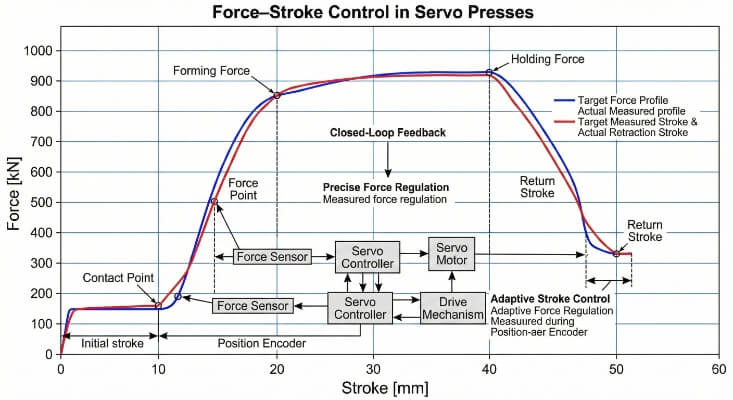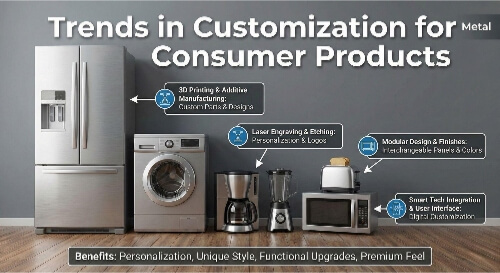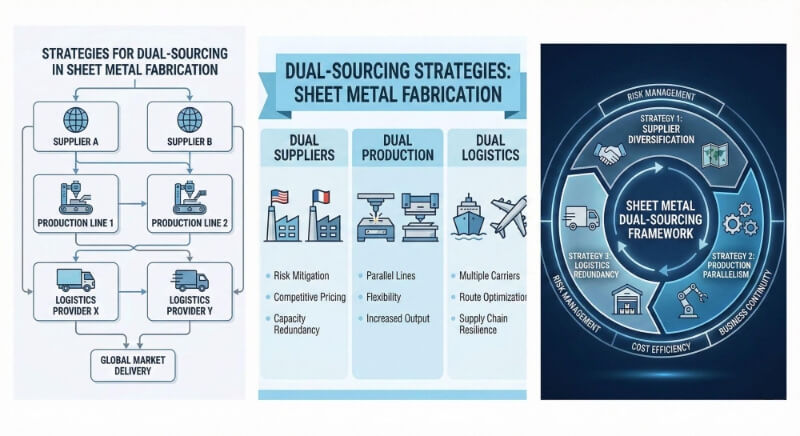يواجه كل مُصنِّع تحديًا مشتركًا: تحقيق تشطيب السطح المثالي. تؤدي خشونة السطح الرديئة إلى رفض الأجزاء وزيادة التكاليف وعدم رضا العملاء. ومع ذلك، يكافح العديد من المهنيين لقياس وتحديد معلمات تشطيب الأسطح في مشاريعهم.
تحدد خشونة السطح مدى سلاسة أو ملمس سطح الجزء المصنّع على المستوى المجهري. يمكن للمصنعين تلبية معايير الجودة الصارمة، وتحسين أداء القِطع، وتقليل تكاليف الإنتاج من خلال قياس خشونة السطح والتحكم فيها. تمنع الصقل السطحي المحدد جيدًا التآكل المبكر، وتحسّن المظهر الجمالي، وتضمن الأداء السليم للقطعة.
هل تريد إتقان قياس خشونة السطح ومواصفاته؟ يغطي هذا الدليل الشامل كل شيء من المفاهيم الأساسية إلى تطبيقات التصنيع المتقدمة.
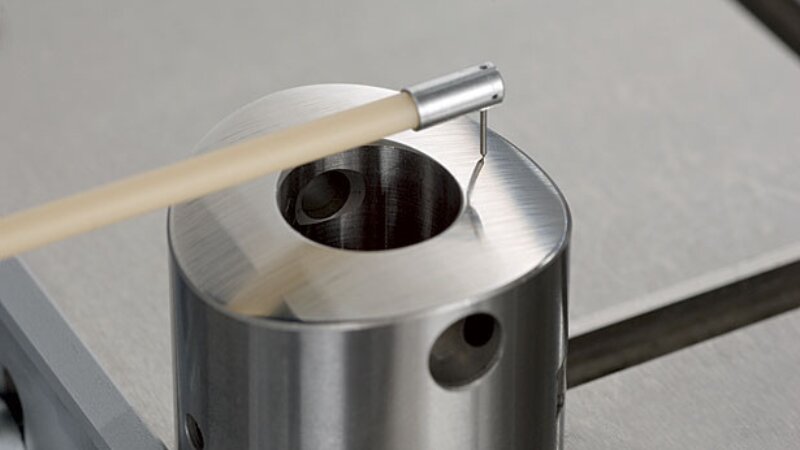
نظرة عامة على مخطط خشونة السطح
يؤثر نسيج السطح بشكل مباشر على وظائف الجزء ومتانته وتكاليف الإنتاج. تساعد المواصفات والقياسات الدقيقة في تحقيق أفضل النتائج عبر عمليات التصنيع، من النماذج الأولية إلى الإنتاج الضخم.
ما هي خشونة السطح؟
تمثّل خشونة السطح انحرافات مجهرية في المظهر الجانبي لسطح الجزء. عند النظر إلى هذه الاختلافات تحت التكبير، تظهر هذه الاختلافات على شكل قمم ووديان، مما يخلق نمطًا مميزًا يؤثر على أداء الجزء في التطبيقات الواقعية.
أهمية خشونة السطح في التصنيع
سليم صقل الأسطح تقلل الإدارة الاحتكاك، وتمنع التآكل المبكر، وتضمن ملاءمة القطعة بشكل مناسب. من الأجهزة الطبية التي تتطلب أسطحًا معقمة إلى مكونات السيارات التي تحتاج إلى مستويات احتكاك محددة، تحدد خشونة السطح جودة المنتج وطول عمره.
نظرة عامة على مخططات خشونة السطح
تعمل مخططات خشونة السطح كمراجع مرئية لمقارنة وتحديد متطلبات التشطيبات النهائية. تطابق هذه الأدوات الموحدة عمليات التصنيع القياسية مع التشطيبات السطحية القابلة للتحقيق، مما يساعد الفرق على اختيار الطرق المناسبة وتحديد أهداف واقعية للجودة.
أنواع خشونة السطح
تساعد معلمات خشونة السطح في تحديد الجوانب المختلفة لقوام السطح. ويوفر كل قياس رؤى فريدة حول كيفية أداء السطح في تطبيقات محددة، بدءًا من الختم وحتى أحمال التحميل.
Ra (متوسط الخشونة الحسابي)
يقيس Ra متوسط ارتفاع المخالفات السطحية من خط الوسط. تظهر هذه المعلمة في معظم الأحيان في الرسومات والمواصفات الفنية لأنها تقدم مؤشراً عاماً جيداً لجودة السطح. في التصنيع الدقيق، تتراوح قيم Ra عادةً من 0.1 إلى 50 ميكرو بوصة.
Rz (متوسط الارتفاع الأقصى)
يحسب Rz متوسط أعلى خمس قمم وخمسة وديان منخفضة ضمن طول أخذ العينات. يثبت هذا البارامتر فائدته بشكل خاص عند تقييم الأسطح حيث قد تؤثر الانحرافات الشديدة على خصائص الختم أو التآكل. تبلغ قيم Rz النموذجية 4-6 مرات أكبر من قياسات Ra.
Rq (جذر متوسط الخشونة المربعة)
يمثل Rq الانحراف المعياري الإحصائي لارتفاعات السطح. يركز هذا القياس على الانحرافات الأكثر أهمية عن خط الوسط، مما يكشف بشكل فعال عن العيوب السطحية الكبيرة. عادةً ما تكون قيم Rq أعلى بنحو 10% من قياسات Ra.
Rt (الارتفاع الكلي للملف الشخصي)
يقيس المسافة الرأسية بين أعلى قمة وأدنى وادٍ عبر طول التقييم بالكامل. تساعد هذه المعلمة في تحديد نقاط الضعف المحتملة أو مشكلات التداخل في أسطح التزاوج. غالبًا ما تتجاوز قيم Rt Rz بمقدار 30-50%.
المخاطر (انحراف الملف الشخصي)
تشير المخاطر إلى ما إذا كان المظهر الجانبي للسطح يميل نحو القمم أو الوديان. يشير الانحراف السالب إلى خصائص تحمل جيدة، بينما يشير الانحراف الموجب إلى احتمال وجود احتباس جيد لزيوت التشحيم. وتمثل القيمة الصفرية ملفًا جانبيًا موزعًا بالتساوي.
اركو (تفرع الملف الشخصي)
يصف Roku حدة المظهر الجانبي لخشونة السطح. تشير القيم الأعلى من 3 إلى أسطح شائكة ذات قمم مميزة، بينما تشير القيم الأقل من 3 إلى ميزات أكثر استدارة. تساعد هذه المعلمة على التنبؤ بسلوك التآكل وقدرات التحميل.
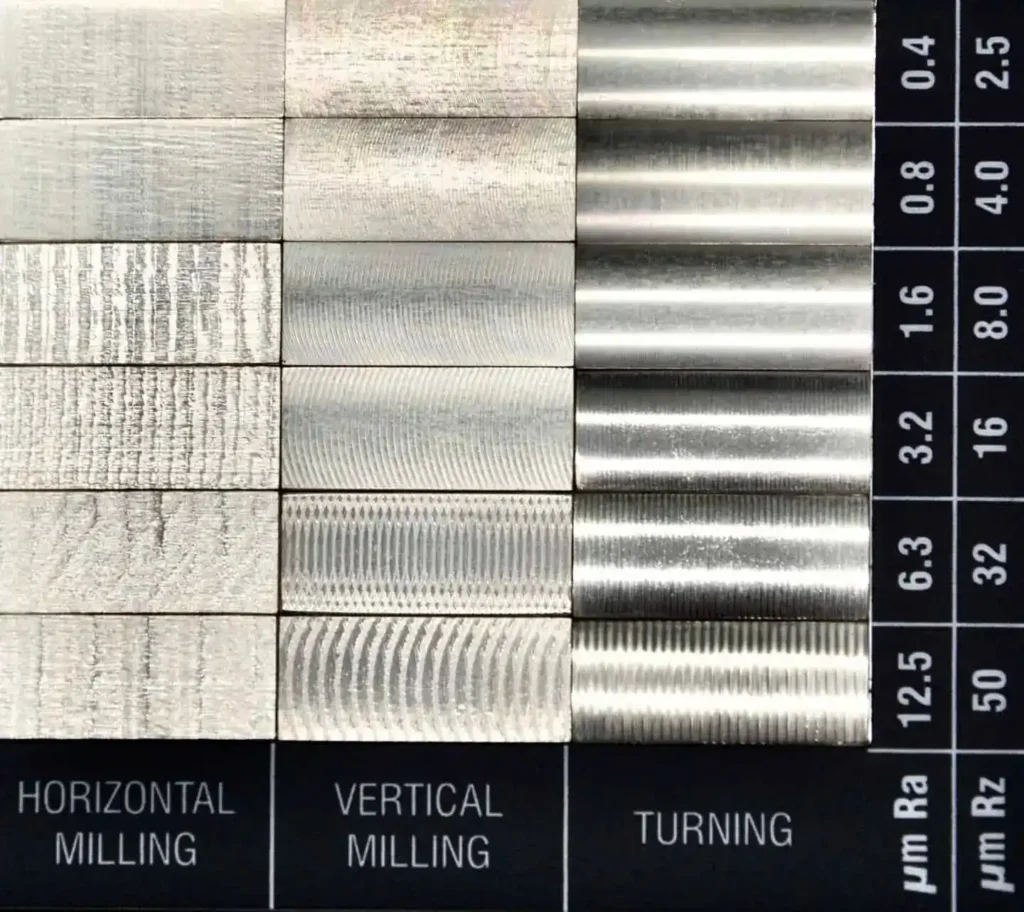
قياس خشونة السطح
تضمن تقنية القياس المناسبة إجراء تقييم دقيق للتشطيب السطحي. يساعد اختيار الطرق والأدوات المناسبة في الحفاظ على مراقبة الجودة مع تحسين كفاءة الإنتاج.
تقنيات القياس الشائعة
تناسب طرق القياس المختلفة أنواع الأسطح المختلفة ومتطلبات الدقة. تقدم كل طريقة مزايا مميزة لتطبيقات وبيئات إنتاج محددة.
طرق الاتصال
تقوم أجهزة قياس الملامسة بسحب قلم ماسي على السطح لإنشاء ملف تعريف الارتفاع. وتوفر هذه التقنية نتائج موثوقة لمعظم تطبيقات التصنيع، مع دقة تصل إلى 0.1 ميكرو بوصة. يجتاز القلم عادةً بسرعة 0.1-0.5 بوصة في الثانية.
فوائد طرق الاتصال:
- دقة عالية على معظم المواد
- القياس المباشر لقوام السطح
- إخراج بيانات رقمية واضحة
- موثوقية مثبتة في البيئات الصناعية
محددات:
- خطر خدش السطح
- سرعة قياس أبطأ
- وصول محدود إلى الميزات العميقة
- تآكل القلم بمرور الوقت
طرق عدم الاتصال
تستخدم الأنظمة البصرية انعكاس الضوء أو أنماط التداخل لقياس نسيج السطح. تعمل هذه الطرق بشكل جيد بالنسبة للمواد الحساسة والفحص عالي السرعة، وتحقق معدلات قياس تصل إلى 100 مرة أسرع من طرق التلامس.
تقنيات عدم التلامس الشائعة:
- التثليث بالليزر
- قياس التداخل الضوء الأبيض
- الفحص المجهري المتحد البؤر
- التصوير المجسم الرقمي
الأدوات المستخدمة للقياس
تجمع أدوات قياس السطح الحديثة بين الأجهزة الدقيقة والبرامج المتقدمة. توفر الأنظمة الحالية كلاً من المعلمات الأساسية ورسم الخرائط التفصيلية ثلاثية الأبعاد للأسطح.
أدوات القياس الرئيسية:
- أجهزة اختبار الخشونة المحمولة
- أجهزة قياس الملامح على الطاولة
- أنظمة القياس البصري
- أنظمة CMM متعددة الاستشعار CMM
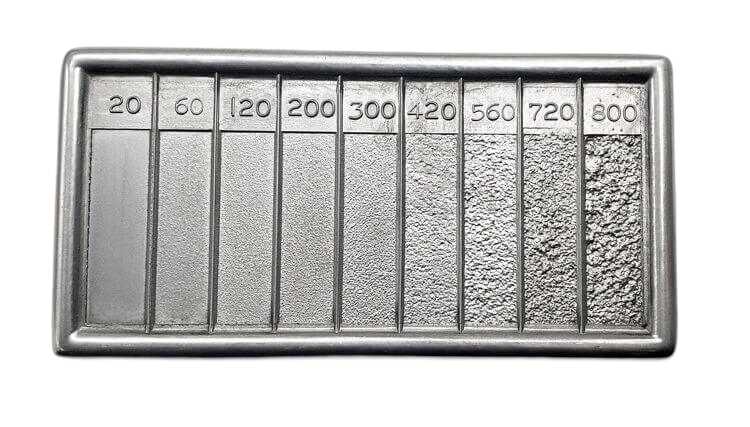
تفسير الرسوم البيانية لخشونة السطح
تربط مخططات خشونة السطح بين عمليات التصنيع والتشطيبات التي يمكن تحقيقها. تساعد هذه الأدوات الفرق على اتخاذ قرارات مستنيرة بشأن طرق الإنتاج ومتطلبات الجودة.
فهم مكونات المخطط البياني
تعرض مخططات خشونة السطح البيانات بتنسيقات منظمة للرجوع إليها بسرعة. تنظيم واضح يجعل من السهل مطابقة قدرات المعالجة مع متطلبات التصميم.
عناصر الرسم البياني الرئيسية:
مقاييس الخشونة
- قيم الميكرو إنش (معيار الولايات المتحدة)
- قيم الميكرومتر (متري)
- عوامل التحويل
نطاقات المعالجة
- نطاقات التشطيب النموذجية
- مناطق التشغيل المثلى
- قيود العملية
كيفية قراءة قيم خشونة السطح
تتطلب قراءة مخططات خشونة السطح الانتباه إلى المقياس والسياق. تشير القيم إلى كل من قدرة العملية ومتطلبات المنتج.
خطوات تفسير الرسم البياني:
حدد موقع الميزان
- وحدات الفحص (ميكروينش/ميكرومتر)
- ملاحظة الخانات العشرية
- تحديد النطاقات
البحث عن نطاقات العملية
- الإمكانيات القياسية
- خيارات المعالجة الخاصة
- اعتبارات التكلفة
متطلبات المطابقة
- مواصفات التصميم
- اختيار العملية
- أهداف الجودة
الربط بين خشونة السطح والوظيفة
ترتبط صقل السطح مباشرة بأداء القِطع. تحتاج التطبيقات المختلفة إلى مستويات خشونة محددة لتحقيق الأداء الأمثل.
متطلبات التقديم:
أسطح المحامل
- 16-32 بوصة صغيرة: قياسي
- 8-16 بوصة صغيرة: دقة
- 2-8 بوصة صغيرة: دقة عالية
ختم الأسطح
- 32-63 بوصة صغيرة: الأختام الأساسية
- 16-32 بوصة صغيرة: أختام الضغط
- 8-16 بوصة صغيرة: الضغط العالي
تشطيبات المظهر
- 125-250 ميكرو بوصة: المرافق
- 32-125 ميكرو بوصة: تجاري
- 4-32 ميكرو بوصة: غالي
| ميكرومتر (ميكرومتر) | ميكرو بوصة (µفي) | صقل الأسطح | التطبيقات النموذجية |
|---|---|---|---|
| 25 | 1000 | خشن | القطع بالمنشار، والتشكيل الخشن، ومناطق الخلوص غير المشكّلة |
| 12.5 | 500 | خشن | التغذية الخشنة، والقطع الثقيل (الخراطة، الطحن، الطحن القرصي) |
| 6.3 | 250 | خشنة متوسطة | عمليات الطحن السطحي، والطحن القرصي، والطحن، والحفر، وأسطح الخلوص مع متطلبات الإجهاد |
| 3.2 | 125 | خشنة متوسطة | الأجزاء المعرضة للاهتزازات والأحمال والضغط العالي |
| 1.6 | 63 | جيد | تغذية دقيقة، سرعات عالية نسبياً |
| 0.8 | 32 | درجة عالية | الطحن الأسطواني أو بدون مركز أو الطحن السطحي، المنتجات بدون حركة مستمرة أو أحمال كبيرة |
| 0.4 | 16 | جودة عالية | الصقل بالصنفرة والصقل والشحذ الخشن، حيث تكون النعومة مهمة |
| 0.2 | 8 | جيد وعالي الجودة | الصقل والصقل والشحذ والشحذ والحلقات والتعبئة |
| 0.1 | 4 | المكرر | أعمال الصقل والتلميع والشحذ والشحذ والمقاييس والأدوات |
| 0.05 | 2 | جيد جداً | الصقل الدقيق، والشحذ، والصقل الفائق، وكتل القياس الدقيقة |
تحسين تشطيب السطح
غالبًا ما يتطلب تحسين تشطيب السطح تقنيات وعمليات محددة. ويوازن النهج الصحيح بين متطلبات الجودة وتكاليف الإنتاج والقيود الزمنية.
تقنيات تحسين خشونة السطح
يؤدي اختيار التقنية المناسبة إلى زيادة الكفاءة والجودة. تتراوح الأساليب من تعديلات التصنيع الأساسية إلى المعالجات السطحية المتخصصة.
عمليات التصنيع
تؤثر معلمات التصنيع بشكل مباشر على جودة السطح. يمكن أن تؤدي التعديلات الطفيفة إلى تحسينات كبيرة في التشطيب.
العوامل الرئيسية:
معلمات القطع
- السرعة: 500-1000 قدم/متر مربع للصلب
- تغذية 0.001 - 0.005 أبريل
- العمق: 0.005-0.020 بوصة
اختيار الأداة
- تحسين الهندسة
- أنواع الطلاء
- درجة المواد
ظروف الماكينة
- التحكم في الصلابة
- تقليل الاهتزازات
- إدارة سائل التبريد
المعالجات السطحية
تعمل معالجات ما بعد التصنيع على تحسين تشطيب السطح. تعمل هذه العمليات على صقل الملمس وتحسين خصائص المواد.
العلاجات الشائعة:
التشطيب الميكانيكي
- طحن
- اللف
- تلميع
- الصقل بالخردق
العمليات الكيميائية
اختيار الطريقة المناسبة لتطبيقك
يعتمد اختيار الطريقة على عوامل متعددة. ضع في اعتبارك جميع المتطلبات عند التخطيط لتحسينات تشطيب السطح.
معايير الاختيار:
متطلبات الجزء
- هدف تشطيب السطح النهائي
- نوع المادة
- التعقيد الهندسي
احتياجات الأداء
- مقاومة التآكل
- الحماية من التآكل
- المتطلبات الجمالية
خاتمة
تؤثر جودة تشطيب السطح على أداء المنتج والتكلفة والموثوقية. يؤدي القياس السليم والمواصفات والتحكم في خشونة السطح إلى نتائج متسقة. يحقق المصنعون التشطيبات السطحية المثلى من خلال تطبيق التقنيات والمعايير الصحيحة.
نقدم في Shengen تقارير شاملة لفحص الأسطح باستخدام معدات قياس متطورة لضمان استيفاء مواصفاتك الدقيقة. يقوم فريقنا المتمرس بتنفيذ مجموعة واسعة من عمليات تشطيب الأسطح، بما في ذلك التلميع والتنظيف بالفرشاة والسفع بالخرز والأكسدة والطلاء الكهربائي. اتصل بنا عبر البريد الإلكتروني اليوم؛ نحن مستعدون للعمل معك.
الأسئلة الشائعة
ما هي الوحدات القياسية المستخدمة في مخططات خشونة السطح؟
تستخدم الشركات المصنعة في الولايات المتحدة عادةً الميكروينش (µin)، بينما تستخدم القياسات المترية الميكرومتر (µm). الميكروينش الواحد يساوي 0.0254 ميكرومتر. تعرض معظم معدات القياس الحديثة كلتا الوحدتين للتوافق العالمي.
كيف تؤثر المواد المختلفة على خشونة السطح؟
تغير خصائص المواد كيفية استجابة الأسطح لعمليات التصنيع. تميل المواد الأكثر ليونة إلى إنتاج تشطيبات أكثر نعومة ولكنها قد تظهر المزيد من التآكل. المواد الأكثر تعقيداً تقاوم التآكل بشكل أفضل ولكنها تتطلب معالجة إضافية للحصول على تشطيبات دقيقة.
هل يمكن أن تؤثر خشونة السطح على عمر المنتج؟
يؤثر تشطيب السطح بشكل مباشر على معدلات التآكل والاحتكاك ومقاومة التعب. تدوم الأسطح الأكثر نعومة بشكل عام لفترة أطول في الأجزاء المتحركة، بينما تساعد الخشونة المتحكم فيها على الاحتفاظ بالتشحيم. تعمل مواصفات السطح المناسبة على إطالة عمر المكونات وتقليل احتياجات الصيانة.
ما هي أفضل الممارسات للحفاظ على دقة القياس؟
تؤدي المعايرة المنتظمة وظروف القياس النظيفة والتقنية المتسقة إلى نتائج موثوقة. كما أن استقرار درجة الحرارة، والتحكم في الاهتزاز، والدعم المناسب للتركيبات مهم أيضًا. ويضمن تدريب المشغل اتساق ممارسات القياس.
كيف يمكنني تحديد خشونة السطح المناسبة لمشروعي؟
طابق متطلبات السطح مع وظيفة الجزء وقيود التكلفة وقدرات التصنيع. ضع في اعتبارك عوامل مثل مقاومة التآكل والمظهر واحتياجات التجميع. راجع التطبيقات المماثلة ومعايير الصناعة للحصول على إرشادات.
مهلا، أنا كيفن لي

على مدى السنوات العشر الماضية، كنت منغمسًا في أشكال مختلفة من تصنيع الصفائح المعدنية، وشاركت رؤى رائعة هنا من تجاربي عبر ورش العمل المتنوعة.
ابقى على تواصل

كيفن لي
لدي أكثر من عشر سنوات من الخبرة المهنية في تصنيع الصفائح المعدنية، وتخصصت في القطع بالليزر، والثني، واللحام، وتقنيات معالجة الأسطح. كمدير فني في شنغن، أنا ملتزم بحل تحديات التصنيع المعقدة ودفع الابتكار والجودة في كل مشروع.

